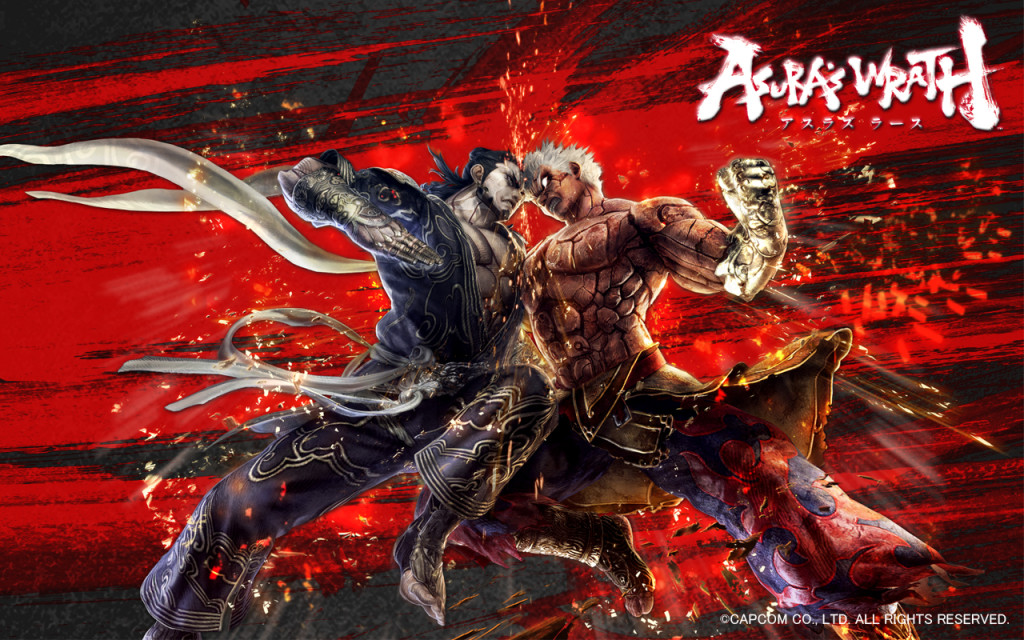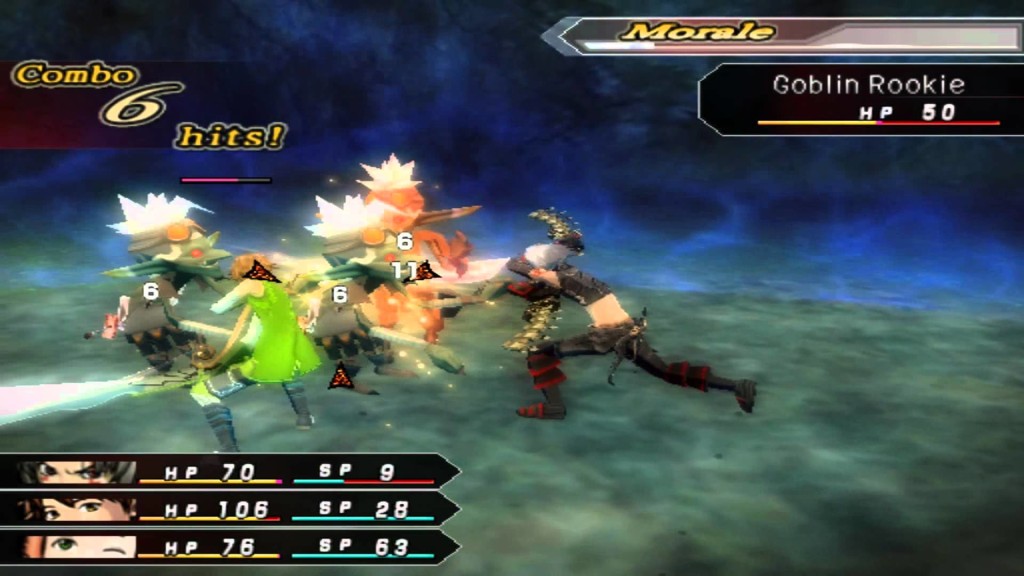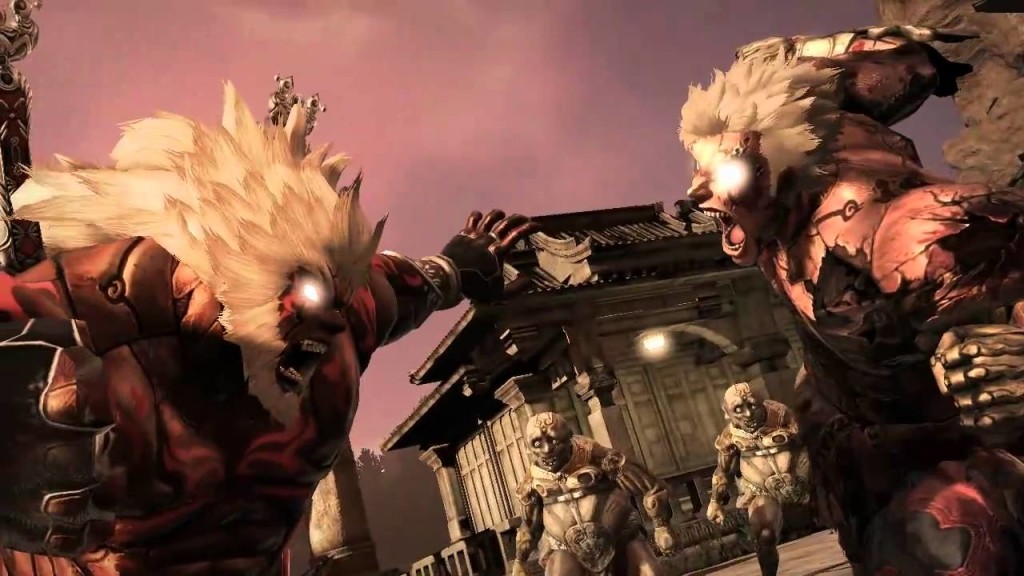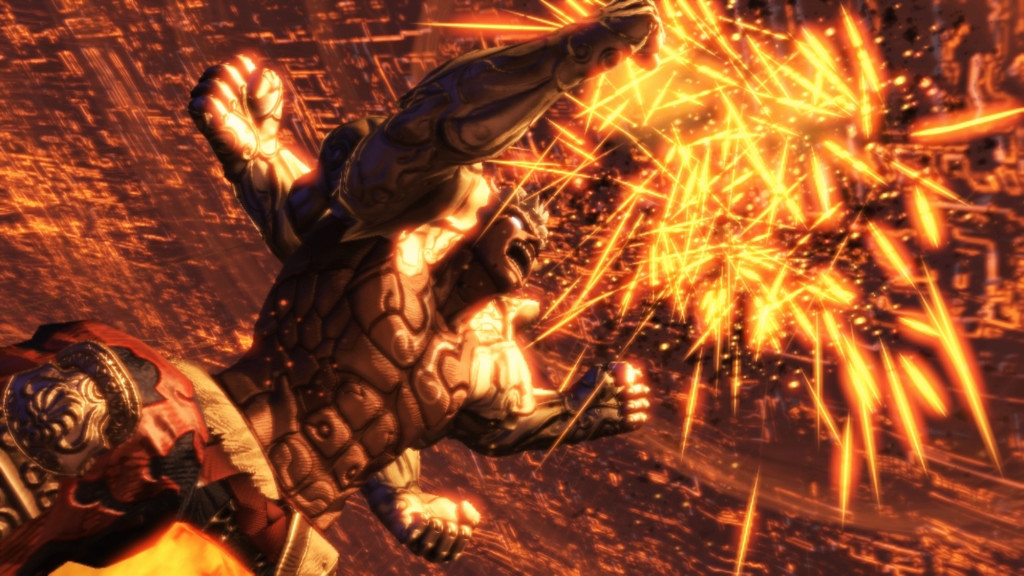Last updated on March 3, 2016
 Asura’s Wrath is a game that I respect more than I enjoy, and believe me when I say I wanted to like it, a lot. An “artistic”, risk-taking portfolio-expander for the then-struggling Capcom (if not still struggling), the company sought the aid of CyberConnect2 to create what I’d call the idealized anime experience in video game form. Considering the track record of licensed properties under the belt of CyberConnect2, you’d imagine that such an idea would come out fully-baked, but that’s not exactly what happened…
Asura’s Wrath is a game that I respect more than I enjoy, and believe me when I say I wanted to like it, a lot. An “artistic”, risk-taking portfolio-expander for the then-struggling Capcom (if not still struggling), the company sought the aid of CyberConnect2 to create what I’d call the idealized anime experience in video game form. Considering the track record of licensed properties under the belt of CyberConnect2, you’d imagine that such an idea would come out fully-baked, but that’s not exactly what happened…
First, a little digression about CyberConnect2. Their attempts to create grand tales in the anime tradition started with the confusingly named .hack, a very strange series (owned by Bandai) of games that basically prefigured Sword Art Online by a decade. It’s a single-player MMO (?) that tells a story over 3-4 games long (!!), and also forced avid fans to buy several full-priced games in a row. Remember, the video game market just came off the JRPG boom of the PS1 era, and almost every Japanese video game developer in the genre seemed drunk on their own power. Xenosaga, while only 3 games long in its current form, originally planned on six installments. Clearly, the ambition seems there, but the execution lacked in so many areas I don’t know where to begin.

Anyway, their real success story derives from CyberConnect2’s Naruto games. Naruto, as you might know, became the Dragon Ball Z of the early 00s’, buttressed by a giant cast of ninja characters shouting about magical powers and friendship while fighting each other for hundreds and hundreds and hundreds (and I do mean HUNDREDS) of episodes, far past the attention span of any normal human being who wasn’t under the age of 15 and could keep up with this stuff (i.e., not me). I don’t mean to disparage such properties, of course; some people love shonen anime to death, but I’m not one of them.
The games, on the other hand, present a different story. They absolutely nail the look and feel of Naruto, along with creating a rather fast-based fighting game to boot. Now, I’d dispense with any pretensions of balancing or hardcore mechanical mastery; Naruto games clearly aren’t attempting that, and neither does CyberConnect2. Rather, it places you directly in the action of the Naruto universe, using your (favorite) character, and with all the associated accouterments of the series. CyberConnect2 knows their audience, and while they pander heavily with the constant Naruto releases, they iterate on this formula every year to great success. I personally can’t understand the appeal outside those fighting mechanics, but hey, to each his own.
So, we establish CyberConnect2 demonstrates a penchant for converting anime into video game, at least in some respect. But what if the reverse happened – that is, we convert a video game into an anime? Asura’s Wrath takes that very concept to its absolute zenith, both for better and for worse.
 On the one hand, I don’t think I’ve ever been so impressed with the presentation of a game before! Asura’s Wrath is a completely original property that mines heavily from both Theravada and Vajryana Buddhism, as well as smatterings of Hinduism, to form its core themes of vengeance, suffering, death, rebirth, and justice around the myth of the Asuras; it also takes aesthetic notes from its religious inspirations, from the design of the characters (who look a whole lot like real life Bodhisattva statutes) to even the basic story beats. The presentation astounds, despite the possible barriers to entry; they put so much detail into every frame that the console struggles to hit above single digits in several cases. Think about how risky and off-putting this whole concept could be! That goes especially for a Christian audience, who might cite 1 Thessalonians 5:15 right from the get-go:
On the one hand, I don’t think I’ve ever been so impressed with the presentation of a game before! Asura’s Wrath is a completely original property that mines heavily from both Theravada and Vajryana Buddhism, as well as smatterings of Hinduism, to form its core themes of vengeance, suffering, death, rebirth, and justice around the myth of the Asuras; it also takes aesthetic notes from its religious inspirations, from the design of the characters (who look a whole lot like real life Bodhisattva statutes) to even the basic story beats. The presentation astounds, despite the possible barriers to entry; they put so much detail into every frame that the console struggles to hit above single digits in several cases. Think about how risky and off-putting this whole concept could be! That goes especially for a Christian audience, who might cite 1 Thessalonians 5:15 right from the get-go:
15 See that no one repays another with evil for evil, but always seek after that which is good for one another and for all people.
But, I like to think of Asura’s Wrath as a window into another culture, another religious traditions. Its values, its understanding of right and wrong, and how seriously we should take it vary vastly from Western culture. These are the sorts of things we need to know, both to avoid insult and also converse with people who come from a completely different world. Asura’s Wrath can seem like a weird version of cultural immersion, but all that unfamiliarity makes it a pretty fantastic experience.
While, on a visceral level, it functions under its world-destroying Dragon Ball Z appeal (as you can see from nearly every trailer ever created for the game), it’s actually a pretty emotionally sad game, more so than most that I’ve played. The music’s haunting nature underlines this, and while it’s appropriate epic, there’s truly moments of melancholy sadness as the cycle of pain continues for Asura over several lifetimes. The demigod, continually betrayed by former friends and leaders, loses his wife and his daughter all in one day towards “the greater good”; Asura will have none of that! Of course, the story’s predictable in the grand anime tradition, but that’s besides the point; Asura’s Wrath intends to convey the heightened emotions of melodrama, and CyberConnect2 implements this very effectively within a very distinct religion-based setting. The specifics of the story seem less relevant than how it makes you feel, and they certainly succeed in that aim.
The quicktime events actually connect you physically with the story. Granted, there’s a lot of mashing, but the mashing correlates with the titular Asura’s Wrath more often than not, an unbridled fury that can’t be satiated except via destroying everything that put Asura in his current position. That it doesn’t make for a very good video game, in my opinion, seems besides the point; in their aim of connecting you to the story via button prompts, CyberConnect2 succeeds in putting a much-maligned game mechanic to great use.
 And here comes the point where I recommend the game despite the rating I give it above – a 2/5, if you will. Honestly, I’ve not played such a unique experience in a long time. CyberConnect2 surely succeeded in their aims of making an anime that is sometimes a video game, and there’s no game quite like it on the market (and probably won’t be, given its sales and the horrendous way they dealt with the “true ending” DLC, but that’s a discussion for another day). At this point, I consider the game cheap enough and strange enough that, if you can stomach anime storytelling tropes up the wazoo, you’ll enjoy this immensely. Just ignore any sense of logical continuity, accept the fact that burly men will grandstand about philosophical issues for minutes on end, put down the controller (the majority of the time), and enjoy it.
And here comes the point where I recommend the game despite the rating I give it above – a 2/5, if you will. Honestly, I’ve not played such a unique experience in a long time. CyberConnect2 surely succeeded in their aims of making an anime that is sometimes a video game, and there’s no game quite like it on the market (and probably won’t be, given its sales and the horrendous way they dealt with the “true ending” DLC, but that’s a discussion for another day). At this point, I consider the game cheap enough and strange enough that, if you can stomach anime storytelling tropes up the wazoo, you’ll enjoy this immensely. Just ignore any sense of logical continuity, accept the fact that burly men will grandstand about philosophical issues for minutes on end, put down the controller (the majority of the time), and enjoy it.
Just play it on Easy, for your own sanity.
